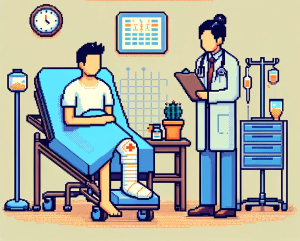
Developing the WHO Violence Against Women Policies Database
In the quest to confront and mitigate the global issue of violence against women (VAW), the World Health Organization (WHO) has taken a significant step forward with the development of the WHO Violence Against Women Policies Database. This innovative tool aims to catalog and analyze VAW policies from 194 WHO Member States, providing invaluable insights for public health practitioners and policymakers.
Here, we into the methodological journey behind this groundbreaking initiative, as detailed in the article Methodological reflections: developing the WHO database of violence against women policies published in Health Policy and Planning
The Gravity of Violence Against Women
Violence against women and girls is not just a violation of human rights; it’s a serious public health issue with far-reaching consequences. The WHO estimates that nearly one in three women globally has experienced physical and/or sexual violence in their lifetime. Addressing this pandemic necessitates a comprehensive approach, one that involves a synergy of policies across various sectors like health, education, justice, and social services.
The Genesis and Evolution of the Database
The WHO commissioned the development of the VAW Policies Database as a response to the need for a systematic monitoring tool. The database’s goal is to establish a baseline for tracking progress against the Global Plan of Action on Violence and to align national policies with WHO recommendations and human rights standards. The journey involved three distinct phases:
- Pilot Phase: Development, refinement, and testing of indicators.
- Phase 1: Data population for a subset of indicators for all 194 countries.
- Phase 2: Comprehensive data population for a broader range of indicators.
Methodological Challenges and Innovations
Developing a global policy database is no small feat. The team faced numerous challenges, from defining indicators to selecting relevant policy documents. Here are some key takeaways from their experience:
- Indicator Development: Crafting precise and relevant indicators is a complex, iterative process. The team learned to strike a balance between the depth of information and the feasibility of data collection.
- Policy Document Selection: Determining which policy documents to include required pragmatic decisions, balancing the relevance of content with the practicality of analysis.
- Language and Analysis: Addressing language diversity and standardizing content analysis was crucial. The team used online translation services and developed detailed guidance for consistent interpretation of policy content.
- Quality Assurance: Implementing robust quality assurance measures was vital to ensure data reliability and standardization.
- Sustainability: Ensuring the database’s longevity and relevance meant considering future updates and resource availability.
Implications for Public Health Practitioners
For public health practitioners, the WHO VAW Policies Database serves as a vital resource. It offers:
- A Comprehensive Policy Overview: Understand the global landscape of VAW policies, facilitating cross-country comparisons and learning.
- Evidence-based Insights: The database’s findings can inform policy development, implementation, and advocacy efforts.
- An Accountability Tool: By tracking country-level commitments and policy evolutions, the database helps hold governments accountable.
Conclusion: A Step Toward Ending Violence Against Women
The WHO VAW Policies Database represents a monumental effort in the fight against gender-based violence. Its development is a testament to the power of systematic research, collaboration, and innovation in addressing complex public health issues. As the database evolves, it will undoubtedly continue to be an indispensable asset for practitioners, policymakers, and advocates working towards a world free of violence against women.
Elevate Your Insight with Every Issue!
Ignite your journey as a public health change-maker through ‘This Week in Public Health.’ Each edition draws you nearer to the pulse of community health, pioneering research, and advocacy. Beyond mere news, it’s your catalyst for transformation. Become a part of our community of enlightened individuals dedicated to driving positive change in public health every week – subscribe for free now!



